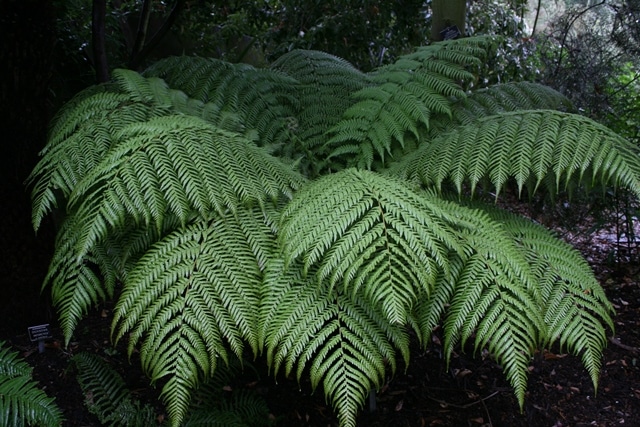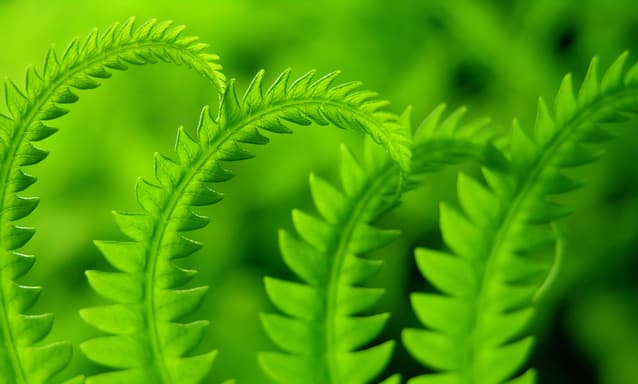At this time of year when the summer heat finds you seeking refuge in the shadier, cooler parts of the garden, make the experience even more inviting by planting shade-loving ferns. These lacy beauties may look delicate, but they are actually quite sturdy and surprisingly easy to grow. Plant a few varieties, and you can enjoy a sea of various eye-catching greens in your garden.
With so many fern choices, it’s easy to find some for your garden. They make good border plants and do well growing around the base of trees. Ferns come in a wide variety of sizes, from small, moss-like plants, to tall tree ferns, such as Cinnamon fern (Osmundastrum cinnamomeum), which reaches 4 feet tall in the garden. The sword fern (Polystichum munitum) has fronds that can grow up to 5 feet in length.

(Julie Bawden-Davis)
Some ferns also grow well indoors, including Boston and maidenhair fern.
To have the best luck growing ferns in your outdoor or indoor garden, keep the following tips in mind.
Provide shady conditions. Most ferns require low light. Plant ferns under a tree or in the shade of a structure, such as under a patio cover. Indoors grow ferns in bright, indirect light.

(Brandon Keim/FreeImages.com)
Plant in rich, well-draining soil. Ferns grow the best in humus-rich, moist soil that drains well, such as what is found on the forest floor. Plant in an area of the garden that offers these conditions, or amend with generous amounts of homemade or bagged compost. Grow indoor ferns in a mix of three parts organic potting soil to one part worm compost in a container with drainage holes.
Keep moist. Water ferns regularly, so that the soil stays moist but not soggy. To retain soil moisture and keep fern roots cool, add a 2-inch layer of shredded bark to the area surrounding the plant. Water the ground thoroughly before applying the mulch and then water again once the mulch is applied, which will seal in moisture. Indoor ferns can also be mulched.

(John Evans/FreeImages.com)
Feed occasionally. Ferns aren’t heavy feeders but do respond well to a fertilizing once in spring and again in mid-summer. Apply an organic, well-balanced fertilizer.
Provide extra humidity indoors. Most ferns thrive in humidity, which can be in short supply indoors—especially if the home is air-conditioned or heated. Ferns not receiving sufficient humidity in the indoor garden will experience dry, brown leaf tips and edges. Increase humidity for ferns by grouping plants, which each transpire and release moisture into the air. Misting daily and placing ferns over humidity trays also helps raise the moisture level surrounding the plants.
Julie Bawden-Davis is a garden writer and master gardener, who since 1985 has written for publications such as The American Gardener, Organic Gardening, Wildflower, Better Homes and Gardens and The Los Angeles Times. She is the author of seven books, including Reader’s Digest Flower Gardening, Fairy Gardening, The Strawberry Story, and Indoor Gardening the Organic Way, and is the founder of HealthyHouseplants.com.

